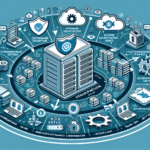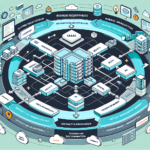Securing the IT infrastructure for social media platforms is critical due to the sensitive nature of user data, the high-profile risk of cyberattacks, and the need for scalability and reliability. Below are key strategies you can implement to secure the infrastructure effectively:
1. Data Protection and Encryption
- Encrypt Data: Use strong encryption (AES-256 or higher) for data at rest and in transit (TLS/SSL).
- Database Security: Implement database encryption, row-level security, and regular data backups.
- Secure API Endpoints: Use OAuth 2.0 or similar protocols to secure communication between systems and third-party integrations.
2. Network Security
- Firewalls: Deploy enterprise-grade firewalls to monitor and filter incoming and outgoing traffic.
- Intrusion Detection and Prevention Systems (IDS/IPS): Monitor for unusual behavior and prevent unauthorized access.
- Zero Trust Architecture: Implement a zero-trust security model, ensuring all users and devices are verified before accessing resources.
- Segmentation: Isolate sensitive environments like databases and critical servers from public-facing infrastructure using VLANs or microsegmentation.
3. Authentication and Access Control
- Multi-Factor Authentication (MFA): Mandate MFA for all admin and user accounts.
- Privileged Access Management (PAM): Limit administrative access to critical systems based on role and necessity.
- Least Privilege Principle: Ensure users only have access to the minimum resources necessary to perform their job.
- Single Sign-On (SSO): Implement SSO to streamline authentication while maintaining security.
4. Regular Patching and Updates
- Operating Systems and Applications: Keep all systems up to date with the latest security patches.
- Firmware Updates: Regularly update hardware firmware, including GPU drivers in AI systems.
- Vulnerability Scanning: Conduct routine vulnerability scans to identify and remediate weaknesses.
5. Secure Backup and Disaster Recovery
- Regular Backups: Implement automated, encrypted backups of critical data and configurations.
- Offsite Storage: Use geographically diverse locations for storing backups.
- Disaster Recovery Plan: Develop and test a robust disaster recovery plan to ensure minimal downtime in case of an attack or failure.
6. Monitoring and Incident Response
- Real-time Monitoring: Use SIEM (Security Information and Event Management) tools to monitor logs and detect anomalies.
- Threat Intelligence: Leverage threat intelligence feeds to stay ahead of emerging threats.
- Incident Response Plan: Create and test incident response protocols for handling breaches or cyberattacks.
7. Secure Virtualization and Containers
- Virtual Machine Hardening: Apply security best practices to hypervisors and VM configurations.
- Container Security: Use tools like Kubernetes RBAC (Role-Based Access Control), network policies, and image scanning to secure containerized environments.
- Secrets Management: Store sensitive credentials in tools like HashiCorp Vault or Kubernetes Secrets.
8. AI/ML Security
- Secure AI Models: Protect intellectual property of AI models with access control and encryption.
- GPU Security: Secure GPU clusters by isolating workloads and restricting access to compute resources.
- Adversarial Defense: Protect AI systems from adversarial attacks designed to manipulate model outputs.
- Ethical AI: Ensure compliance with data protection laws like GDPR and CCPA when training models.
9. Compliance and Auditing
- Data Protection Laws: Ensure compliance with GDPR, CCPA, HIPAA, or other applicable regulations.
- SOC 2 Compliance: Obtain SOC 2 certification to demonstrate secure data handling practices.
- Regular Audits: Conduct periodic security audits to verify the effectiveness of controls and policies.
10. Employee Awareness and Training
- Security Training: Train employees on phishing, social engineering, and secure practices for handling data.
- Access Policies: Enforce strict policies for device usage, remote work, and BYOD (Bring Your Own Device).
- Incident Reporting: Encourage employees to report suspicious activity promptly.
11. DDoS Protection
- Web Application Firewall (WAF): Use WAFs to block malicious traffic targeting your web applications.
- CDN Services: Employ CDN providers like Cloudflare or Akamai to absorb and mitigate DDoS attacks.
- Rate Limiting: Configure rate limiting to prevent abuse of APIs and endpoints.
12. Physical Security
- Datacenter Security: Ensure your datacenters are equipped with biometric access, surveillance cameras, and physical barriers.
- Environmental Controls: Implement fire suppression systems, HVAC, and redundant power supplies.
Tools and Technologies
- Identity Management: Azure AD, Okta, or similar IAM platforms.
- Firewall Solutions: Palo Alto Networks, Fortinet, or Cisco ASA.
- SIEM Tools: Splunk, Elastic Security, or IBM QRadar.
- Backup Solutions: Veeam, Cohesity, or Commvault.
- Container Security: Aqua Security, Twistlock, or Sysdig.
- DDoS Protection: Cloudflare, AWS Shield, or Imperva.
Final Thoughts
Securing the IT infrastructure for social media platforms requires a multi-layered approach. Regularly assess risks, follow best practices, and stay updated on the latest threats. Investing in security not only protects user data but also ensures the platform’s reputation and business continuity.


